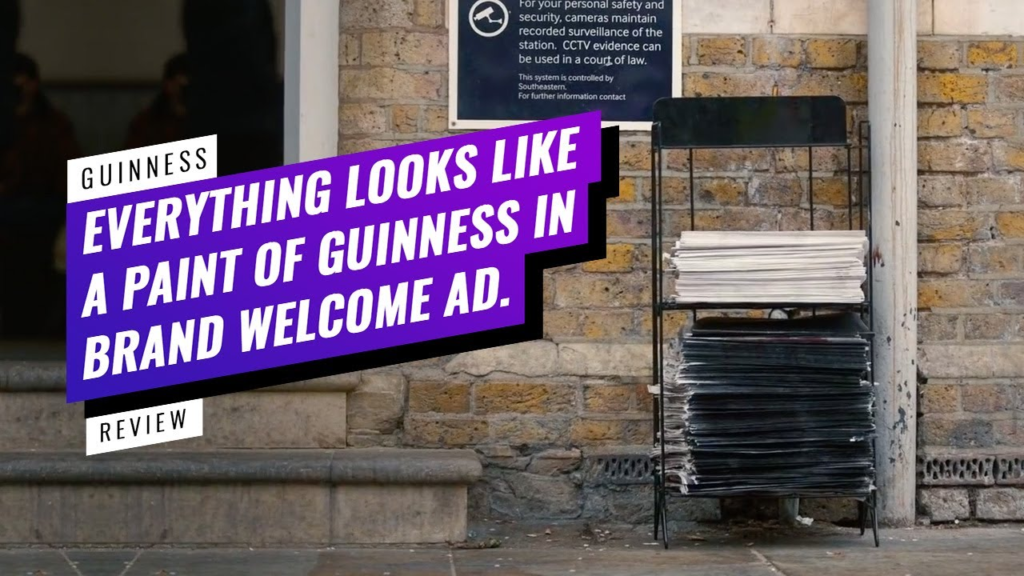6 Tips to Create Cross-Platform Campaigns (With Examples)

Table of Contents
- Understanding Cross-Platform Campaigns
- Why Cross-Platform Campaigns Are Necessary
- Examples of Cross-Platform Campaigns
- What it Takes to Run a Successful Cross-Platform Campaign
With the prominence of social media in daily life and considering that practically everything – from home electronics to groceries – can be bought online, it is not surprising that social media marketing has become a necessity for businesses to thrive.
However, it isn’t prudent for a business to limit its online marketing strategy to one platform. A business must be able to juggle marketing campaigns on multiple social media platforms simultaneously. Here are some pro tips on creating and running successful cross-platform campaigns.
Understanding Cross-Platform Campaigns
People are constantly active on social media platforms, often toggling between multiple platforms, searching for new ways to keep themselves engaged. This makes it essential for brands and businesses to concentrate on having social media marketing campaigns on all of these channels.

However, that isn’t as simple as just advertising on these platforms. Instead, brands need to understand the dynamics of each of these platforms and concentrate on developing platform-specific campaigns if they want to create successful customer engagement.
These are called cross-platform campaigns. Creating original content specific to different social media platforms allows brands to create a seamless omnichannel experience for their customers instead of plain advertising.
Why Cross-Platform Campaigns are Necessary
- Customized content helps improve customer experiences across platforms.
- Different platforms support different formats. For example, Instagram supports images, while Twitter supports only 280 words per tweet. This means content formats cannot be universal across all platforms.
- Cross-platform campaigns offer much better engagement and conversion rates when compared with single platform campaigns.
- A multi-platform campaign ensures increased brand visibility and recall value.

Examples of Cross-Platform Campaigns
Let’s take a look at a couple of successful cross-platform campaign examples.
- Mercedes-Benz had the most success they had experienced with any advertising campaign in over 20 years when they ran a cross-platform campaign in 2013 for the launch of the CLA. Here are some key points of how they ran that campaign.
- Their online community, known as “Generation Benz,” generated user profiles. They targeted anyone who was in their early 20s to 40s.
- They released a traditional television Superbowl advertisement featuring Kate Upton, Willem Dafoe, and Usher. The game that year was played at the Mercedes-Benz Stadium in New Orleans.
- They created a microsite for the model and promoted it on social media platforms, including paid advertisements on Facebook and the “#clatakethewheel” campaign on all platforms.
- Their Facebook channel also received extra promotions by millennial social media influencer Casey Neistat, whom they partnered with.
- One of the successes this campaign brought them was an increase of 82% in the number of people who had previously purchased other luxury cars now buying the CLA.

- Guinness leveraged the pandemic and ensuing lockdown that made their customers miss drinking the beverage in their local pubs with friends. They ran an innovative cross-platform campaign when the pubs reopened in 2021. Here’s a look at the campaign.
- Guinness released a TV ad with images such as a white cat sitting on a black bin, a foaming washing machine, and a grocery cart covered with canvas, all things intended to remind the viewer of the beverage either in shape or in color.
- They then ran a multi-platform campaign with the hashtag #LooksLikeGuinness and asked their online followers to post images that reminded them of the beverage while using the hashtag.
- The result was that when the pubs reopened in May 2021, their engagement rate increased a staggering 350% compared to their standard engagement benchmark.

- Amazon executed what was probably the most successful cross-platform promotional activity of 2021 for the launch of their show, “The Wheel of Time.” Here’s what they did.
- The most awe-inspiring part of the campaign was a huge 3D billboard in Piccadilly Square, London.
- The show is based on a fantasy book series. Amazon engaged with the books’ hardcore fans by creating an after-show livestream with smaller creators with the fandom.
- They also had social media promotions, in-app advertisements, retargeted advertisements, and more.
- The result was over 1.16 billion streams in the first three days of the show’s premiere alone, giving Amazon the world’s number one show.

What it Takes to Run a Successful Cross-Platform Campaign
Here are some of the key components a successful cross-platform campaign should have.
1. Have a rock-solid plan
- Before starting a multi-channel campaign, it is essential to be clear about the campaign’s end goal.
- In addition, the business needs to have defined their target demographic and have a profile of their customers and prospective customers.
- The plan should also include other critical details, such as the start date, the end date, and the proposed budget for the campaign.
2. Know the platforms
Knowing the reach and format of each platform is essential to set platform-specific goals. For example, the perfect content for Instagram is stories and reels, which can draw attention and showcase products or services. These can also be directly linked to the brand’s website.
The same stories and reels can also be linked to the brand’s Facebook page, in addition to other paid promotional activities.
Similarly, LinkedIn is ideal for building B2B conversations, showcasing innovations, and brand-building activities. Twitter is great for customer interactions, while Pinterest can drive brand awareness and promote sales.
3. Customization is key
Once a business knows the channels their cross-platform campaign will use, the worst thing they can do is make a single content piece work across all platforms.
Whether the copy or the images, customizing content to fit the channel is essential to the campaign’s success. Everything from the number of hashtags a post can use to text length, and content format differ from one platform to the other.
4. Make it a cross-device campaign.
People are very fluid when it comes to devices. A customer may browse for a product on their mobile website, add it to their cart on their tablet later in the day, and eventually close the sale on their laptop. Some customers may even add a product to their wishlist online but go to the brand’s store to purchase it.

This brings to light two important things for businesses to remember.
- First, the content should be in an adaptable format for all devices. According to Google, anything that takes more than 5 seconds to load on any device has an 80% chance of losing the customer’s interest.
- The second thing is that certain mediums work well with each other, making it ideal for pairing the two. For example, TV and in-store advertising work well together to convert sales. Similarly, TV advertising works well with YouTube advertising, while social media, website promotions, and in-store promotions work well with each other.
5. Get personal
Customers are now drawn to personalized attention more than ever. This offers businesses multiple opportunities for customer engagement, revenue generation, and brand recall.
For example, 64% of all customers today are more likely to want to chat with a business online than call a toll-free number to have a conversation. Being available to attend to those queries goes a long way in making customers feel cared for. Pre- and post-sale conversations go a long way in cementing customer relationships.
Chatting with customers should be covered over social media channels and the business website. Companies like Heyday already offer AI-powered chatbot services to help businesses get the ball rolling, but actual human interaction is what customers are looking for.
It also helps to keep an eye on online customer activity. For example, suppose a customer is led to an online store from an Instagram post, and they spend time browsing for products, only to add one to their cart before abandoning it. In that case, a small email with a discount offered on the product may be just the right push to close the sale.
Sending out thank you emails and personalized birthday and anniversary wishes are all great ways to engage with customers and promote cross-platform sales. As many as 84% of all customers attest that personal treatment is essential for closing a deal with them.
While this may seem tedious, plenty of template providers and AI platforms can automate most of the hard work, such as Boomtrain, Phrasee, and Seventh Sense.
6. Organic reach vs. paid reach
A common misconception is that for any social media post to do well, it must be promoted by paying the platform. This isn’t particularly true. Posts with great content often tend to draw attention organically and can be used as a benchmark to judge a brand’s real-time popularity.

However, this should not be misconstrued to mean that paid promotions are unnecessary either. A good marketing campaign ought to be a mix of both organic and paid reach.
For example, if a post is doing well organically, a paid push may increase its reach even more substantially. Similarly, some campaigns may not be drawing attention to themselves because they need the kind of visibility only a paid promotion can give them.
Ideally, a business ought to be able to gauge and control paid as well as organic reach from a single platform. And that is precisely what tools such as Hootsuite Social Advertising, SocialPilot, and CoSchedule offer their subscribers.
These tools allow businesses to create social media campaigns, schedule launches for those campaigns, study paid and organic reach, and control their spending across platforms based on scientific data.
By giving businesses a detailed overview of all their social media campaigns on a single platform, these tools allow them to make data-driven changes to live social media campaigns in real-time, making sure they spend money only on channels doing well.
For example, suppose a campaign is doing better on Instagram than on other platforms. In that case, a brand can use these tools to change the budget allocated to campaigns on other channels and focus it on pushing the Instagram campaign to maximize reach.
Similarly, suppose a campaign is doing very poorly on a channel. In that case, it may make more sense to redistribute that budget across other channels instead of continuing to spend it where it isn’t working.
Any intelligently planned and well-executed cross-platform marketing campaign ought to be able to deliver a seamless, consistent experience to customers across platforms. This means businesses need to be constantly aware of changes in trends and customer behaviors and be able to change their campaigns to reflect these dynamically.
While doing all this may seem to be a lot of work, there are, thankfully, multiple artificial intelligence platforms and automation tools in the market to do the grunt work, allowing businesses to concentrate on fine-tuning these campaigns to increase reach, revenue, and retention.

Key Takeaways
- Cross-platform campaigns involve seamlessly using multiple platforms to run business campaigns instead of concentrating on using any single platform.
- Defining campaign goals and planning based on those goals is essential to the success of a multi-platform campaign.
- Knowing what platforms need to be used and the unique characteristics of each platform help design better campaigns.
- Content needs to be customized to be platform-specific for a cross-platform campaign to be successful.
- Customers use multiple devices to engage with brands, so campaigns need to be fluid enough to adapt to various devices. Specific devices and platforms also work better in tandem with each other for campaigns.
- Customers expect personalized service and connections with brands. Leveraging this while executing campaigns helps increase revenue and customer engagement.
- A successful cross-platform campaign uses an intelligent mix of organic and paid reach to manage budgets and increase efficiency. There are tools to help make this easier to manage.
FAQs
Cross-platform marketing involves using multiple platforms to make customers have a seamless brand experience across multiple platforms. The use of AI and automation tools to make the process of cross-platform marketing more streamlined and efficient, increasing output is called cross-platform marketing automation.
– Chatbots
– Email automation
– Social media management
– BuzzSumo
Latest Blogs
Explore how Google’s 2025 AI search updates triggered ranking chaos. Learn actionable strategies to adapt your SEO for AI Overviews, zero-click searches, and SERP volatility. Stay ahead now.
Learn how to rank on AI search engines like ChatGPT, Perplexity, and Gemini by optimizing your content for authority, structure, and relevance. Stay ahead in AI-driven search with this strategic guide.
Explore the best healthcare SEO services for your medical practice. Improve online visibility and effectively reach more patients in need of your services.
